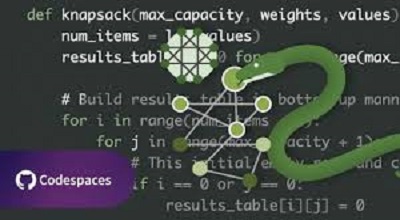Algorithmic Thinking with Python
Algorithmic thinking with Python is a fundamental skill for problem-solving in computer science and programming. It involves breaking down complex problems into smaller, manageable steps and designing efficient solutions using algorithms. Python, with its simplicity and readability, is an excellent language for learning and implementing algorithmic concepts.
In this guide, we will explore:
- The basics of algorithmic thinking
- Key algorithms and their Python implementations
- Real-world examples to solidify understanding
- Best practices for writing efficient code
By the end of this blog post, you will have a strong foundation in algorithmic thinking and be able to apply it to various programming challenges.
What is Algorithmic Thinking?
Algorithmic thinking is the process of defining clear, step-by-step procedures to solve problems. It involves:
- Decomposition: Breaking down a problem into smaller sub-problems.
- Pattern Recognition: Identifying similarities between problems.
- Abstraction: Focusing on the essential details while ignoring irrelevant ones.
- Algorithm Design: Creating a structured solution that can be automated.
Example: Finding the Largest Number in a List
Python
def find_max(numbers):
max_num = numbers[0]
for num in numbers:
if num > max_num:
max_num = num
return max_num
print(find_max([3, 7, 2, 9, 5])) # Output: 9
Why is Algorithmic Thinking Important?
- Improves Problem-Solving Skills: Helps in tackling complex problems methodically.
- Enhances Coding Efficiency: Leads to optimized and scalable solutions.
- Essential for Technical Interviews: Frequently tested in coding interviews.
- Foundation for AI & Data Science: Used in machine learning and big data processing.
Key Concepts in Algorithmic Thinking
Time and Space Complexity
- Big-O Notation: Measures algorithm efficiency (e.g., O(n), O(log n)).
- Time Complexity: How runtime grows with input size.
- Space Complexity: Memory usage relative to input size.
Recursion vs. Iteration
- Recursion: A function calling itself (e.g., Fibonacci sequence).
- Iteration: Looping through data (e.g.,
forandwhileloops).
Divide and Conquer
- Splitting problems into smaller subproblems (e.g., Merge Sort).
Common Algorithmic Techniques
| Technique | Description | Example |
|---|---|---|
| Brute Force | Trying all possible solutions | Linear Search |
| Greedy Algorithms | Choosing the best option at each step | Dijkstra’s Algorithm |
| Dynamic Programming | Storing intermediate results | Fibonacci with Memoization |
| Backtracking | Exploring all possible paths | N-Queens Problem |
Algorithmic Problem-Solving Steps
- Understand the Problem (Inputs, Outputs, Constraints)
- Design the Algorithm (Pseudocode or Flowchart)
- Implement the Solution (Write Python Code)
- Test and Debug (Check Edge Cases)
- Optimize (Improve Time/Space Complexity)
Python Examples of Algorithmic Thinking
Binary Search (Efficient Searching)
Python
def binary_search(arr, target):
left, right = 0, len(arr) - 1
while left <= right:
mid = (left + right) // 2
if arr[mid] == target:
return mid
elif arr[mid] < target:
left = mid + 1
else:
right = mid - 1
return -1
print(binary_search([1, 3, 5, 7, 9], 5)) # Output: 2
Bubble Sort (Sorting Algorithm)
python
def bubble_sort(arr):
n = len(arr)
for i in range(n):
for j in range(0, n-i-1):
if arr[j] > arr[j+1]:
arr[j], arr[j+1] = arr[j+1], arr[j]
return arr
print(bubble_sort([64, 34, 25, 12, 22])) # Output: [12, 22, 25, 34, 64]
Optimizing Algorithms for Efficiency
- Use Efficient Data Structures (Hash Tables, Heaps)
- Avoid Nested Loops When Possible
- Memoization & Caching (Store computed results)
- Parallel Processing (Multithreading in Python)
Real-World Applications of Algorithmic Thinking
- Search Engines (PageRank Algorithm)
- GPS Navigation (Shortest Path Algorithms)
- E-commerce Recommendations (Collaborative Filtering)
- Cryptography (Encryption Algorithms)
Best Practices for Developing Algorithmic Solutions
✅ Write Clean and Readable Code
✅ Test with Different Input Sizes
✅ Document Your Approach
✅ Refactor for Performance
Conclusion
Algorithmic thinking is a crucial skill for programmers, enabling efficient problem-solving and optimized code. By mastering key concepts like recursion, dynamic programming, and complexity analysis, you can tackle real-world challenges effectively.
